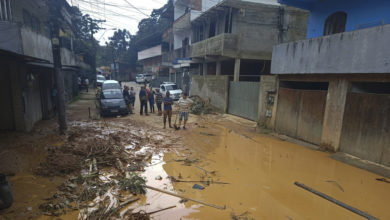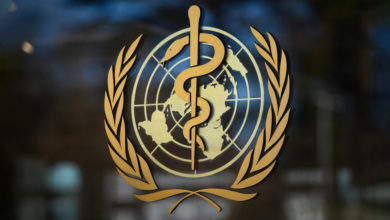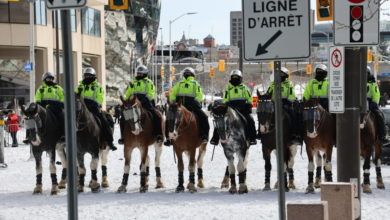Pope Visits Canada to Apologize to Indigenous Communities

On July 24, Pope Francis will begin a weeklong trip across Canada that he called a “pilgrimage of penance” to meet with Indigenous communities and formally apologize for the rampant abuse and “cultural genocide,” at residential schools—ran by the Roman Catholic church—where more than 150,000 Indigenous children were forcibly enrolled.
In late March, delegates of the three largest Indigenous groups in Canada—Métis, Inuit and First Nations—met Pope Francis in the Vatican, and the pope issued the first-ever official apology from a pope to Canada’s Indigenous community. The pope stated that he planned to visit Canada in order to start a healing and reconciliation process.
“Unfortunately, in Canada, many Christians, including some members of religious orders, contributed to the policies of cultural assimilation that in the past gravely damaged native populations in various ways,” Pope Francis said in a public statement in Vatican City last week.
Here’s what you need to know about the visit:
The pope visits Canada
Pope Francis’s trip comes roughly a year after the remains of more than 1,000 people’, primarily children, were discovered on the grounds of former residential schools across Canada, notably in British Columbia and Saskatchewan. The unmarked, mass burial sites sparked national outrage over Canada’s long history of abuse and death that took place at residential schools.
The school administrations, which included clergymen and children who were often there, subjected the students to physical, emotional, or sexual abuse. There were many deaths in the schools due to unsafe living conditions. This was mostly not reported. Indigenous communities have long called for a papal apology taking accountability for the church’s involvement.
In 2007, Canada’s Indian Residential Schools Settlement Agreement became the most significant class-action settlement. In addition to financial compensation, former students were also eligible for investigations into sexual and physical abuse claims, funds for rehabilitation programs, and commemoration for the harm the schools had caused. The Truth and Reconciliation Commission was required by the Settlement Agreement.
The TRC was a Canadian government commission created to examine the effects and legacy of the Indian Residential School system and to outline solutions that don’t erase the history of Indigenous suffering. The commission highlighted the church’s role in the residential school system and advocated for then pope to make a statement.
“We call upon the Pope to issue an apology to Survivors, their families, and communities for the Roman Catholic Church’s role in the spiritual, cultural, emotional, physical, and sexual abuse of First Nations, Inuit, and Métis children in Catholic-run residential schools. We call for that apology to be similar to the 2010 apology issued to Irish victims of abuse and to occur within one year of the issuing of this Report and to be delivered by the Pope in Canada,” the TRC wrote in its Calls to Action in 2015.
On his visit, the pope will be in Edmonton, Quebec, and Iqaluit. These are three places of cultural significance with large Indigenous populations. In a unique diplomatic fashion, the pope won’t be meeting with Canada’s head of state, Prime Minister Justin Trudeau, until halfway through the trip.
Continue readingIndigenous Groups in Canada Want More Than Apology During Pope’s Visit
Pope Francis was the first pope from the Western Hemisphere to be born. His activism on Indigenous rights has earned him praises.
“The fact that the church deals with this is going to be really important. For Catholics, it should be brought up in each church’s pulpit on Sunday. The priests should be explaining what this means to the Catholic people so that they turn their actions around as individuals,” Bill Erasmus, Canadian Chair for the Arctic Athabaskan Council and former Dene National Chief, tells TIME. “That’s the only way this will have any impact and meaning.”
What to know about the Roman Catholic Church’s abuses in Indigenous schools
Canadian officials established the residential school network, which consisted of many boarding schools in Canada. All Indigenous children were required to attend these schools for at least one year. There is extensive documentation that shows the extent of abuses, both sexual and psychological, which have traumatized Indigenous children for generations.
“Myself, I didn’t go to a residential school. My dad had to go. He experienced it, and he didn’t want that for us,” says Erasmus. “I didn’t experience it, but I’m the next generation. It’s intergenerational, it affects all of us.”
From the 1880s through the 1990s, Canada saw about 70% residential schools run by the Catholic Church. The schools provided a basic education but did not offer any indoctrination to Christianity or Euro-Canadian customs.
“If you study how Indigenous lands were invaded or colonized, there’s a pattern that involves the church,” says Erasmus. “It’s because our people already knew spirituality. They already had their own belief system and they weren’t about to argue about god when other spiritual people came amongst them, so they accepted Christianity to a large degree, but then they were lulled into what happened to them.”
According to the University of British Columbia, residential schools were designed to exterminate all aspects of Indigneous cultural heritage. The University of British Columbia article stated that siblings were kept apart and Indigenous customs, languages and traditions were prohibited. The article also reported that children were subject to overcrowding and poor healthcare. An inspector from Canada reported in 1907 that residential schools were the cause of death for 24% of Indigenous children.
These schools had courses in manual labor and trade skills. But, it was generally considered a way to establish social order and contain Indigenous people from lower-working class jobs.
Indigenous communities’ expectations of his visit
Indigenous Canadians across the country are grappling with what the pope’s visit could mean for them. Some feel that it’s a hollow gesture in many ways, while others look forward to it as an opportunity to find peace.
Chief Doris Bill of the Kwanlin Dün First Nation emphasizes the importance of healing that this trip offers for many survivors. The Kwanlin Dün First Nation delegation is bringing counselors and medical professionals in case the event is triggering or overwhelming for any survivors.
“I’m a survivor myself, there are about 49 of us from our First Nation that came down. It was interesting because at 4:30 this morning we had to be at the airport and everybody was excited and smiling–it was really something,” says Bill. “I think everybody has different expectations for what this trip means to them. This will help them in their healing process. For some, the apology means a great deal and I really hope that it helps them move forward and leave all of that negative stuff behind.”
Erasmus believes that while an apology may be necessary, some people might not feel ready to accept it. Erasmus states that it remains to be determined if Catholic Church and other authority complicit in Indigenous oppression will still listen to Indigenous people and assist them with recovery.
“When it comes to the church, the government can’t be left out of this. This is a big issue in Canada as well as in the U.S. [is that] the Catholic church was paid by the government to care for our children in schools,” says Erasmus. “It’s deeply rooted, it’s systemic. It’s in the laws, it’s in the worldviews of Canada.”
Indigenous leaders, advocacy groups and others continue to highlight issues with Doctrine of Discovery. It is the legal precedent which gave European governments the justification to colonize Indigenous lands. The Catholic Church issued a statement in 2016 about the Doctrine of Discovery, acknowledging that it was responsible for the oppression of Indigenous Peoples. However, the Catholic church has not officially renounced the doctrine.
“Part of the message that the First Nations of Canada brought to the Pope when they met earlier this year is that they also have to dismiss the Doctrine of Discovery, which basically says that our people were discovered by others and because we were not Christian at contact, others had the legal obligation to occupy our lands,” says Erasmus. “Part of that is the perpetuation of the myth that we gave up our lands or that we were conquered. We were never conquered. We entered into treaties, which are peace and friendship.”
The pope’s visit to apologize for a long and devastating history of abuse against Indigenous people in Canada is the first step in his goal to make amends.
“When the council talked about this, for us it was a no-brainer. It is our responsibility to help the survivors. This could be a real watershed moment for some people in helping them to move forward on their road to healing,” says Bill.
Here are more must-read stories from TIME




